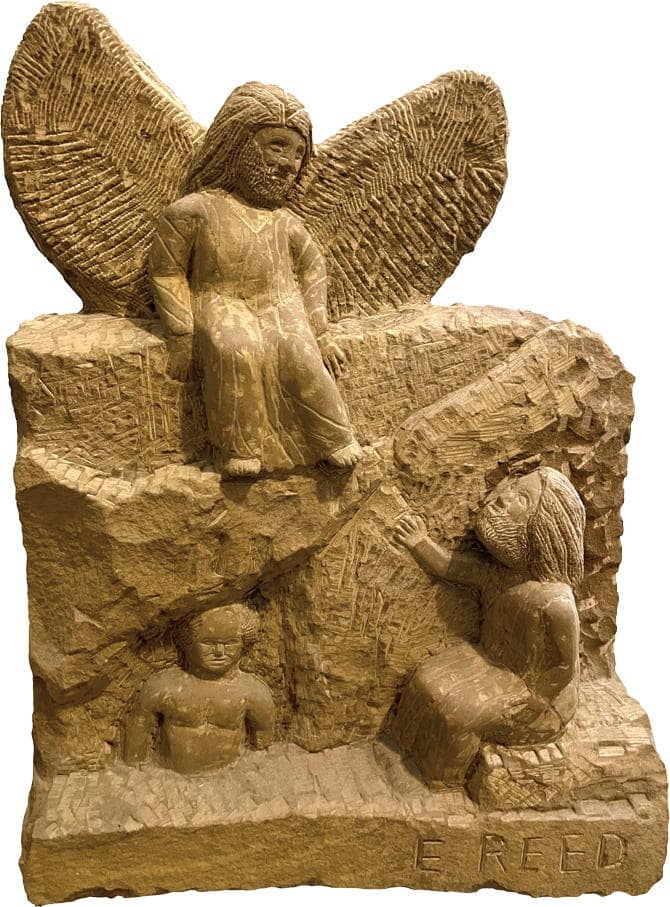First published: Winter 2022/23
His gift for telling tales is always on show in the work of Native American-Irish artist E “Popeye” Reed
E “Popeye” Reed (1919–1985) was an American original. A self-taught artist who carved in stone and wood. Off-the-grid long before it was fashionable, he made almost everything he owned, including his furniture and some of his clothes. Of the process of making his art he said: “I’d like to carve til I die. I would just love to be carvin’ right up until the last minute ... and say, “This is the end of a perfect day’.”

The artist with his work and at work in 1981
all works: sandstone, unless otherwise stated all images courtesy: collection of Michael and Cindy Noland
He preferred to go by his nickname “Popeye” (acquired because his forearms bulged as a result of constantly 14 (although he never wandered far from his birth place), and supported himself with odd jobs. He married but got lifting heavy stones) but he was born Ernest Reed, in 1919, in Jackson County, Ohio. Of Irish and Native-American heritage, he – and his twin brother – grew up in Appalachian Hill country.

Angel on Cliff, 1984, 18 x 24 x 7 in. / 45.5 x 61 x 18 cm
Popeye quit school after the eighth grade as – like many young people in the USA during the Depression – he needed to help support his family who were hard up. He did not get on well with his father and left home as soon as he could, at the age of divorced when his two children were young. He was close with his daughter but became estranged from his son, as he also did from his twin brother.

Adam and Eve Relief (detail), 1975, 16 x 26 x 5 in. / 40.5 x 66 x 12.5 cm
Popeye eventually found his way working as a publication for the Ohio State Fair. But his breakthrough furniture maker and did not become a full-time artist until he was almost 50 years old. While he had had no formal art training, he had carved since childhood, mostly making wooden animals and arrowheads. As an adult, an artist learning his trade, he made carved items – fake artefacts, so the story goes – to sell at the roadside.
Indian Chief and Maiden, 1975, 13 x 12 x 6 in. / 33 x 30.5 x 15 cm
Eventually he started developing his own style of carving and, by 1968, he had become a well-known figure in Jackson County, showing and selling his work at flea markets, festivals and state fairs, and was often found demonstrating stone and wood-carving techniques. In 1980, he was featured in Folk Art from Ohio Collections, a came when the owner of a gallery, Roger McLane, saw his work at a fair and invited him to exhibit. This one-man show at the Ohio Gallery in 1981 helped bring his carvings to the attention of contemporary art collectors, and, later that year, he was given a second one-man show, curated by artist Jeff Way at Equator Gallery in New York.
By MICHAEL NOLAND
This is an article extract; read the full article in Raw Vision #113




